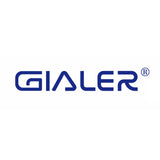In the world of livestock management and wildlife research, RFID animal ear tags have emerged as indispensable tools, facilitating efficient tracking and data collection. However, with the proliferation of RFID technologies, selecting the right type of ear tag can be a daunting task. Among the myriad options available, Low Frequency (LF) and Ultra High Frequency (UHF) tags stand out as primary contenders. In this blog, we delve into the nuances of LF and UHF RFID ear tags, offering insights to help you make an informed decision for your specific application.
Understanding LF RFID Animal Ear Tags:
Low Frequency (LF) RFID ear tags typically operate within the frequency range of 125 kHz to 134 kHz. These tags are renowned for their reliability and resilience in adverse conditions. LF tags are well-suited for applications where close proximity reading and minimal interference are essential. They excel in environments such as barns and stables, where liquids and metals are abundant, offering consistent performance and accurate data capture.
Advantages of LF RFID Tags:
Resistance to Interference: LF tags are less susceptible to interference from liquids and metals, ensuring reliable data capture in challenging environments.
Proximity Reading: With shorter read ranges, LF tags are ideal for applications requiring close proximity reading, allowing for precise identification of individual animals.
Cost-Effectiveness: LF RFID tags are generally more affordable than UHF tags, making them a cost-effective solution for small to medium-scale operations.
LF RFID animal ear tags will not cause cross-reading and are suitable for one-to-one identification.
Disadvantages:
1. Limited recognition distance: The recognition distance of low-frequency RFID ear tags is usually short and requires proximity to the card reading device.
2. Slow data transmission speed: Compared with high frequency, the data transmission speed is slow.
Exploring UHF RFID Animal Ear Tags:
Ultra High Frequency (UHF) RFID ear tags operate within the frequency range of 860 MHz to 960 MHz. These tags are characterized by their extended read ranges and high-speed data transfer capabilities. UHF tags are well-suited for applications requiring remote tracking and real-time data collection over large areas. They find applications in precision farming, wildlife monitoring, and supply chain management, offering unparalleled performance and versatility.
Advantages of UHF RFID Tags:
Extended Read Ranges: UHF tags provide significantly longer read ranges compared to LF tags, enabling remote tracking and data capture over vast areas.
High-Speed Data Transfer: With rapid communication capabilities, UHF tags facilitate swift data transfer, allowing for seamless integration into dynamic operational environments.
Versatility: UHF RFID tags come in a variety of form factors, including smaller sizes suitable for animals with smaller ears, offering versatility in deployment options.
Disadvantages:
1. Higher cost: The hardware cost of UHF RFID ear tags is usually higher.
2. Affected by metals and liquids: Metals and liquids can interfere with UHF RFID signals.
3. When performing batch reading and inventory counting, cross readings and missed readings are prone to occur.
Choosing the Right RFID Animal Ear Tag:
Selecting between LF and UHF RFID ear tags requires careful consideration of various factors:
1. Application Requirements: Determine the specific needs of your application, including read range, environmental conditions, and data collection requirements.
2. Budget Constraints: Consider the upfront costs of tags and associated reader equipment, as well as long-term maintenance and operational costs.
3. Regulatory Compliance: Ensure that the selected tags comply with relevant regulations and standards governing animal tracking and management.
4. Environmental Factors: Assess the presence of liquids, metals, and other potential sources of interference in the deployment environment.
Conclusion:
Choosing the right RFID animal ear tag, whether LF or UHF, is essential for optimizing animal tracking and management operations. While LF tags offer reliability and cost-effectiveness in close proximity applications, UHF tags provide extended read ranges and high-speed data transfer capabilities for remote tracking over large areas. By carefully evaluating the specific requirements of your application and considering factors such as read range, interference, and budget constraints, you can make an informed decision and harness the full potential of RFID technology in animal tracking and management.









